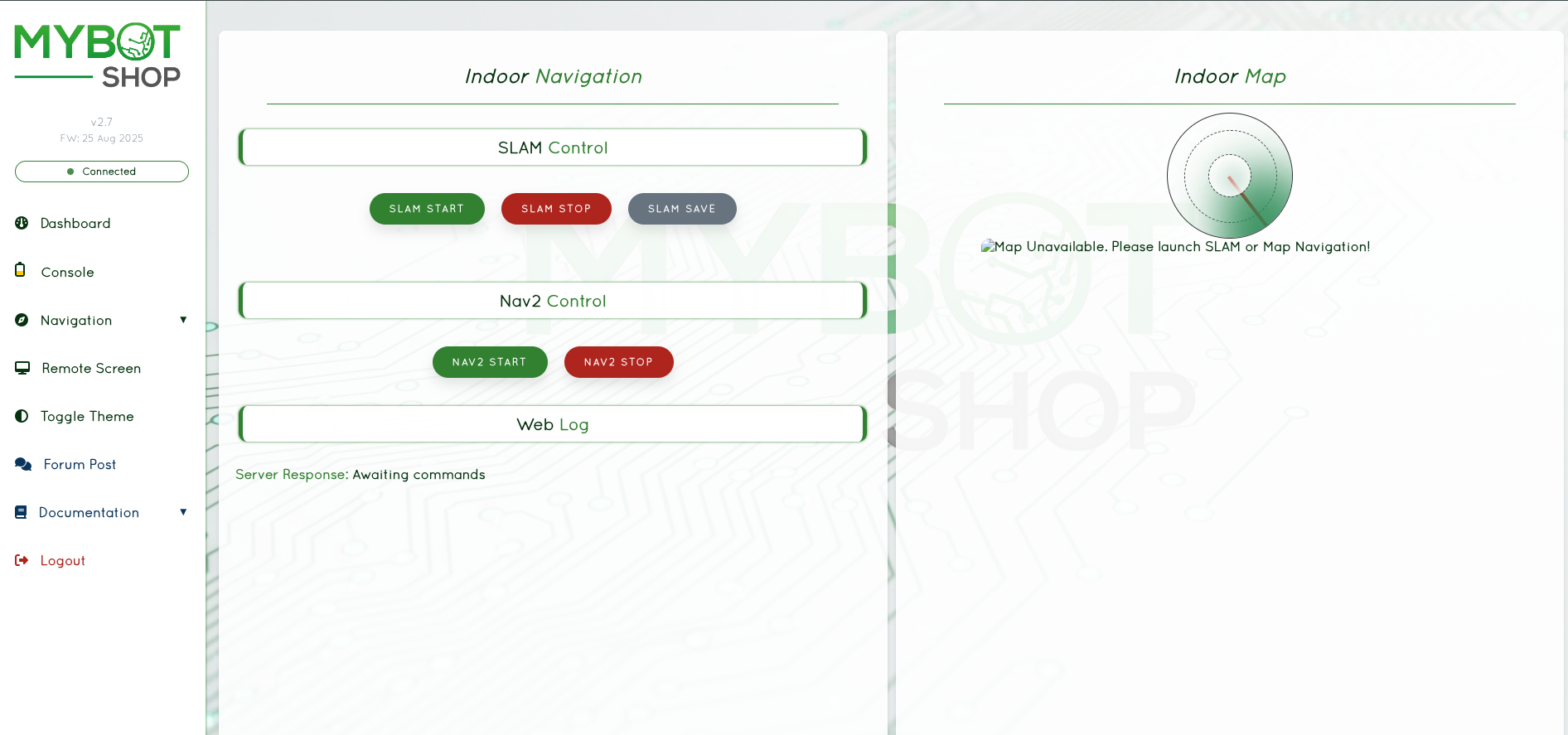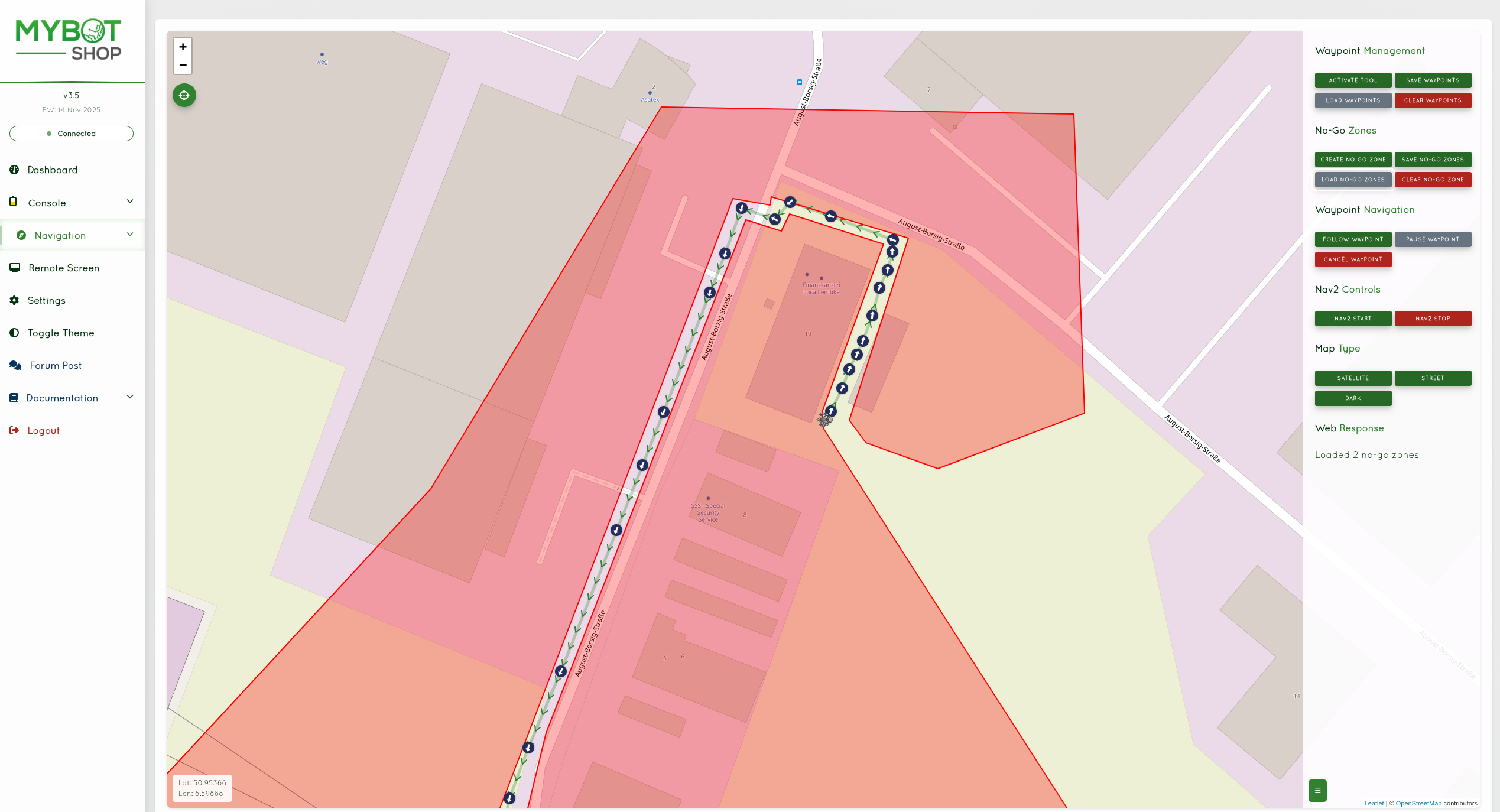Overview
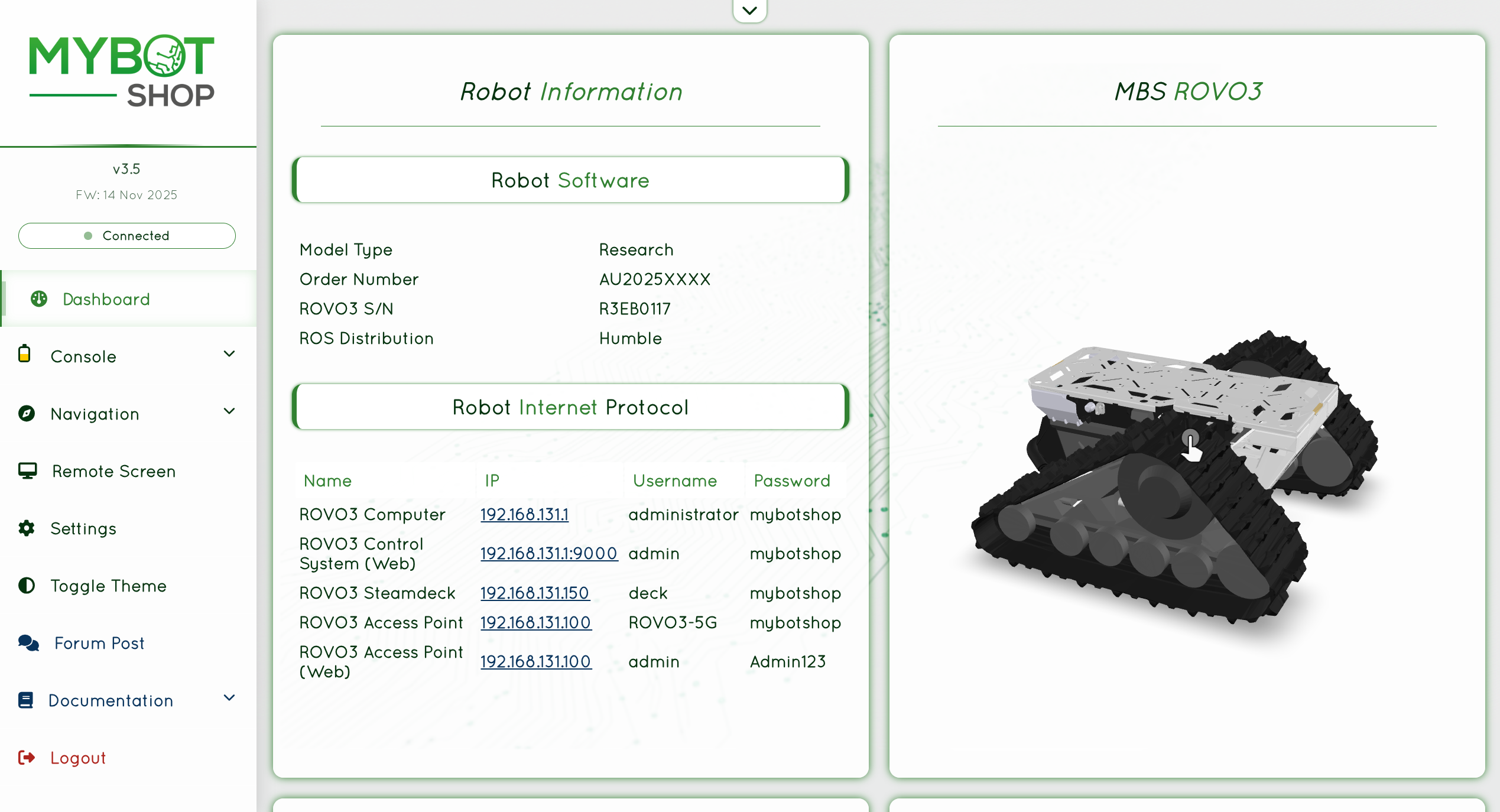
The ROS2 webserver module is included by default in integration-oriented deployments.
It provides a browser-based interface for monitoring, control, and diagnostics.
The interface is accessible over the local network using the device’s IP address on port 9000.
Configuration
/opt/.../webserver/config/robot_webserver.yaml
This file defines behavior such as enabled panels, communication settings, authentication, and custom command bindings.
Login Credentials
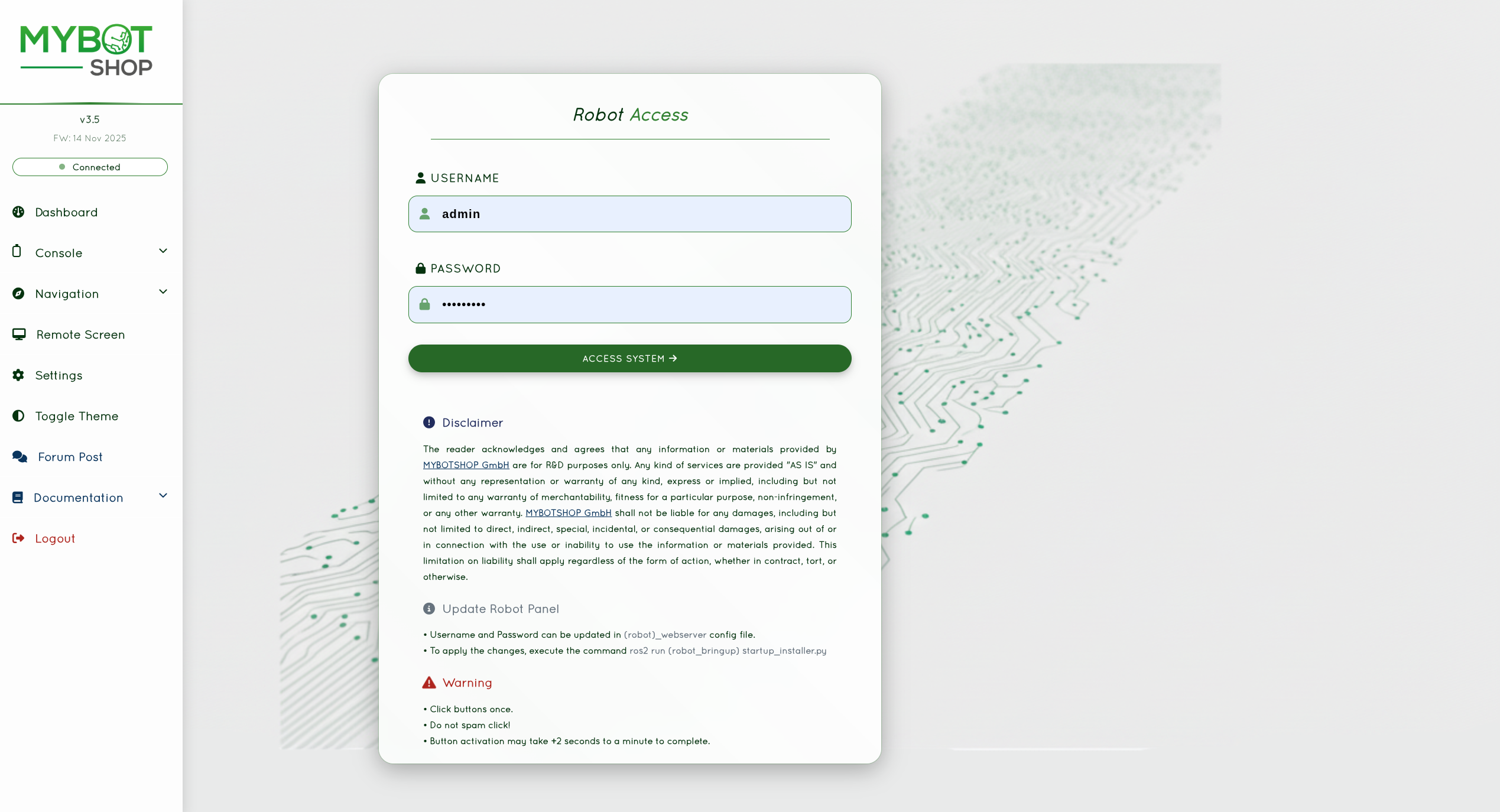
Default access credentials:
Username:
adminPassword:
mybotshop
These can be updated through the configuration file.
Dashboard
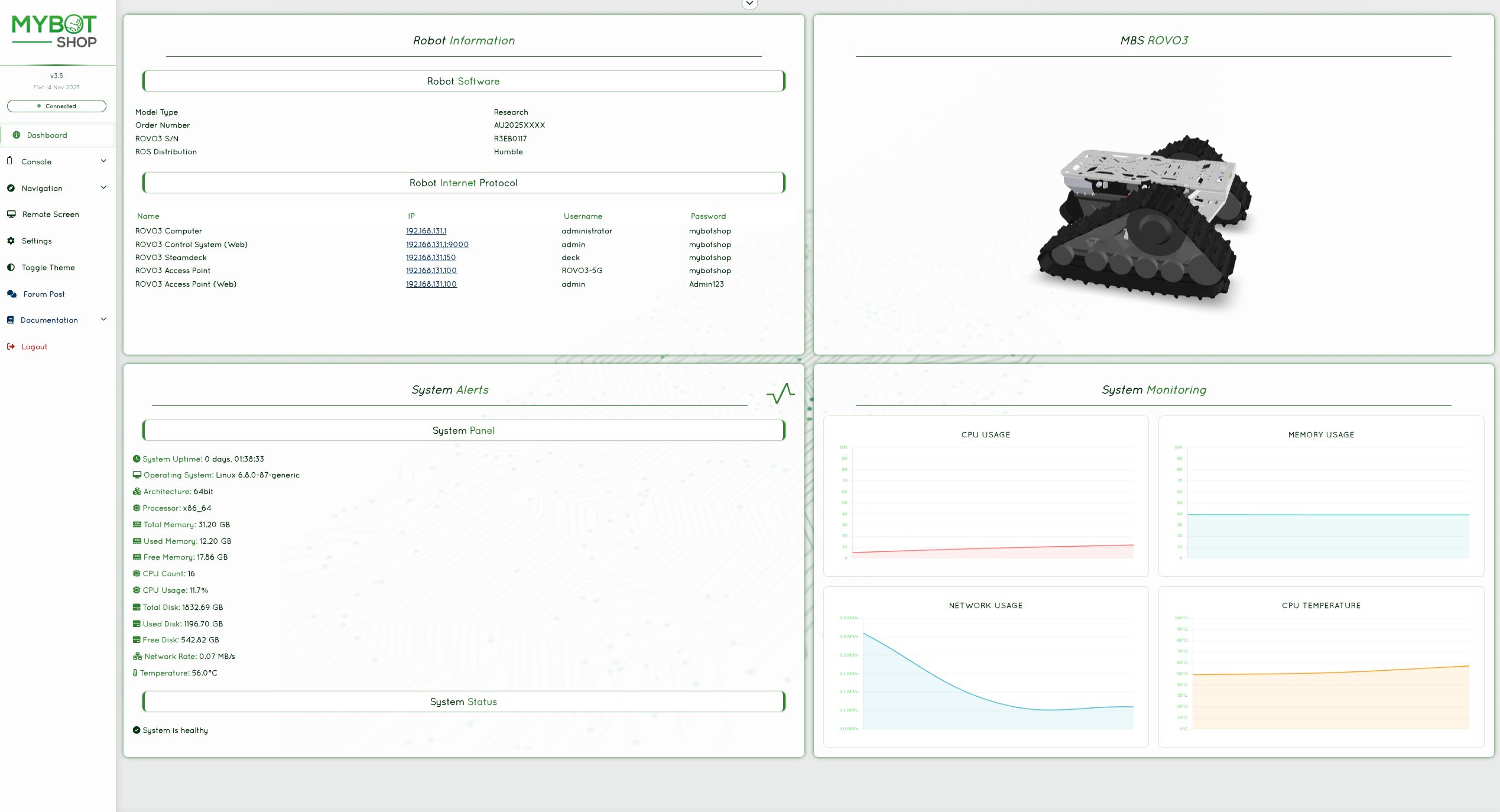
The dashboard offers a concise system overview, including:
Robot operational status
Model information
Network interface details
System load and resource utilization
Console
Control Panel
Video Control
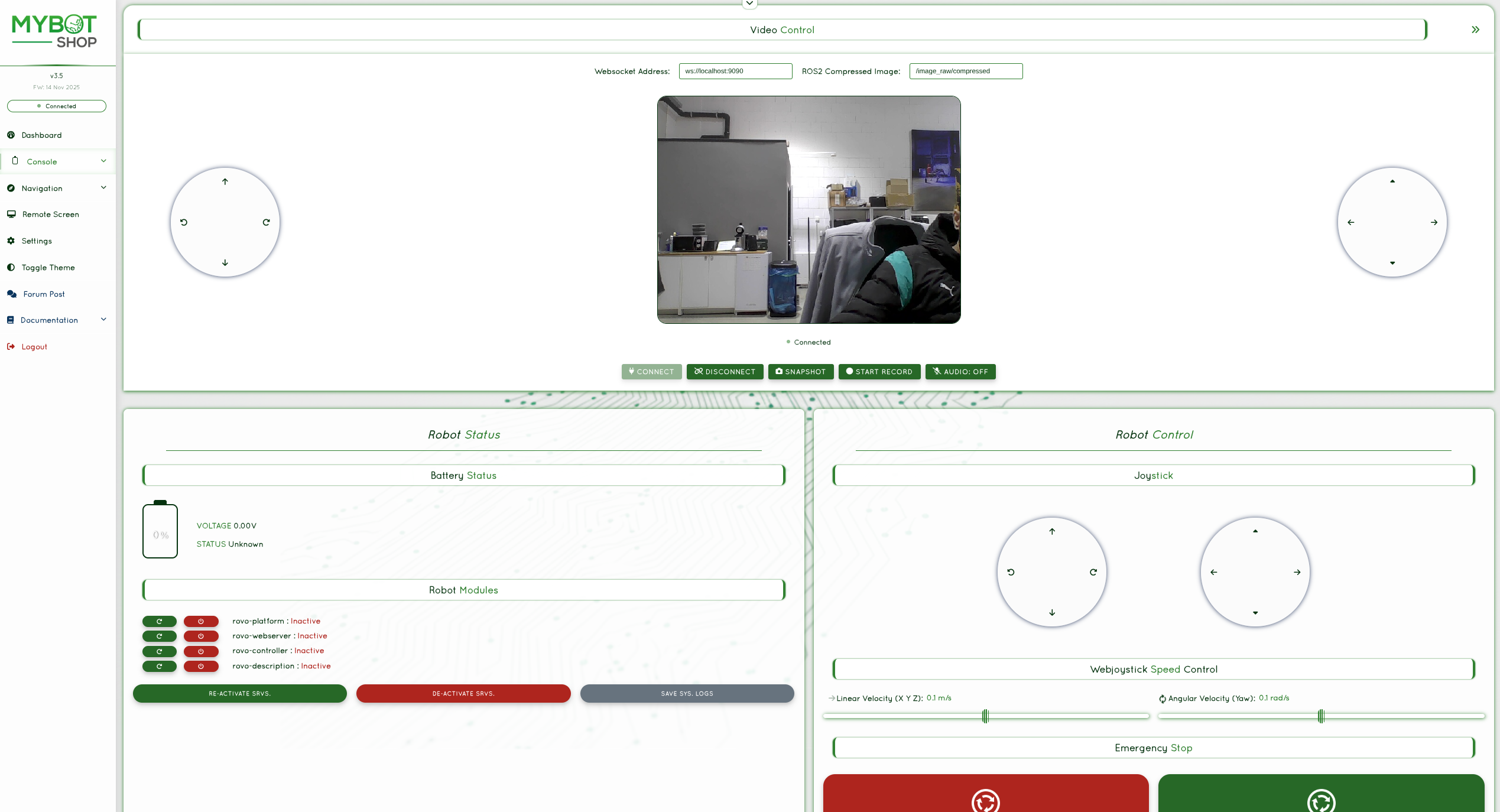
The video module displays real‑time camera feeds via WebSocket‑based streams. It supports multiple ROS2 compressed image topics and can be configured for additional sensors.
Robot Teleoperation


The console integrates essential operational controls, including:
Enabling and disabling ROS2 services
System log recording
Battery and power monitoring
Configurable action buttons for triggering ROS2 services
Web‑based joystick for teleoperation
Online image streams
STT → AI → TTS workflow (currently disabled)
Telemetry Panel
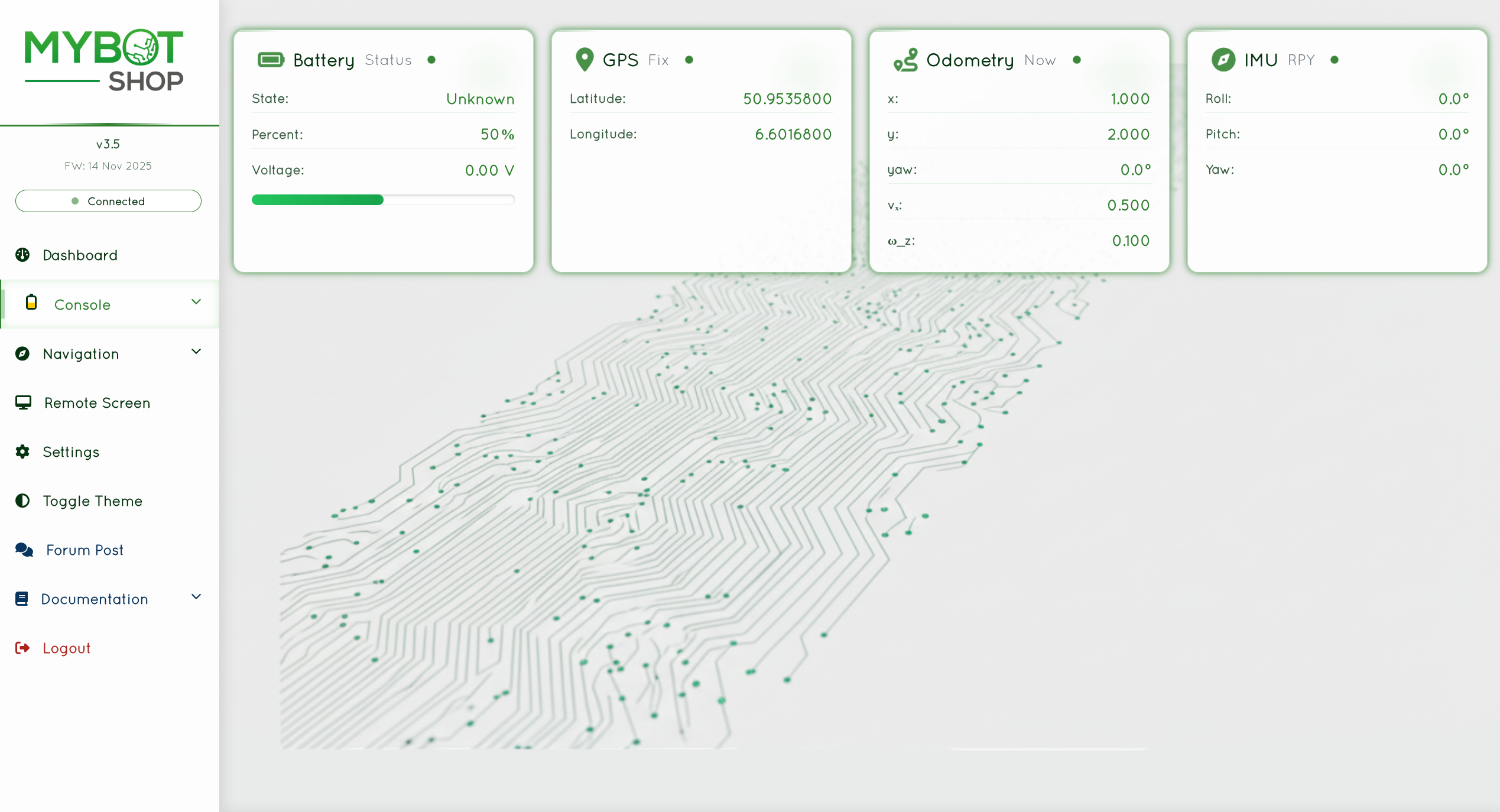
The telemetry panel presents live data from onboard sensors such as:
Battery state
GPS fix and position
Odometry
IMU readings
Remote Screen

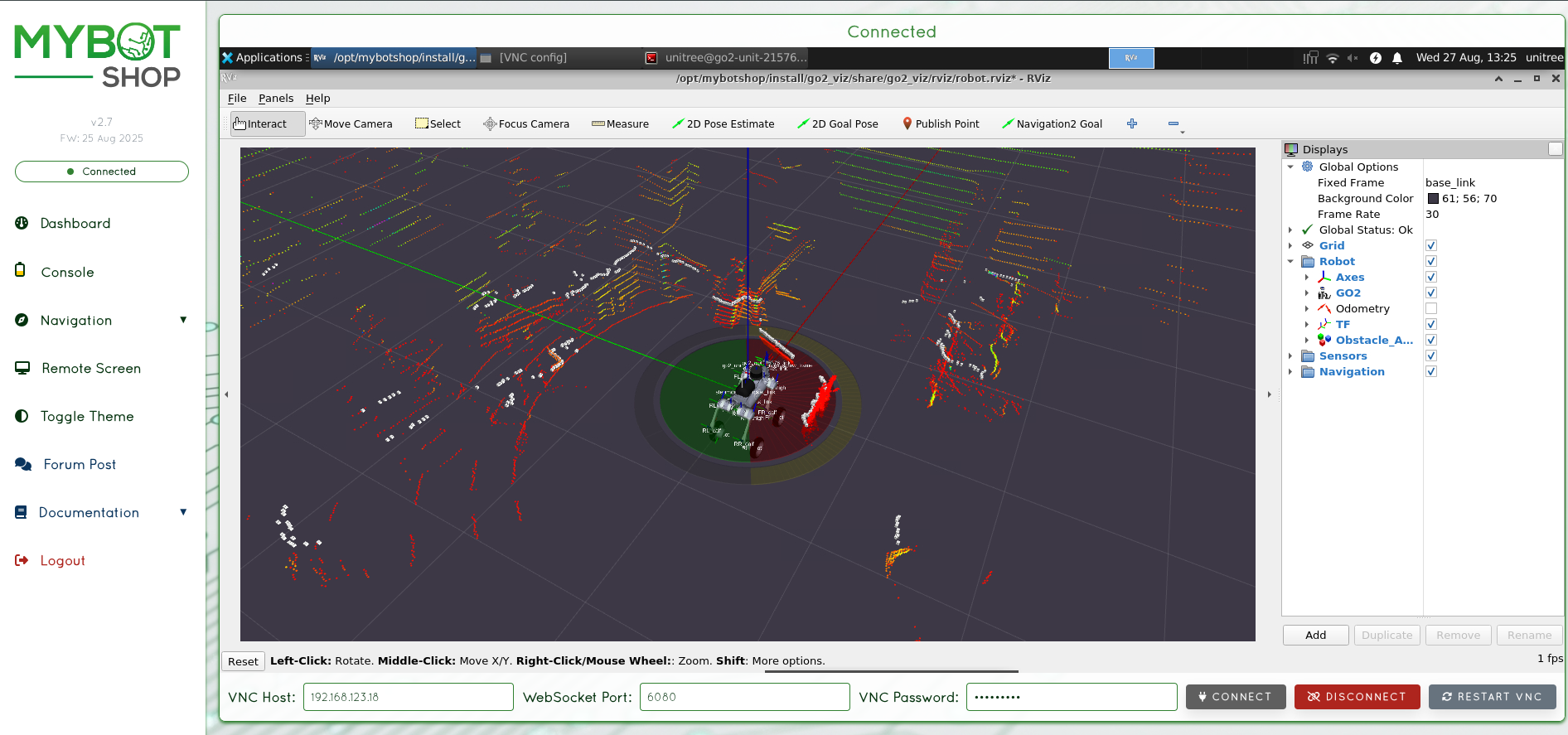
The remote screen feature offers in-browser access to the robot’s onboard computer using a VNC-based interface.
Settings
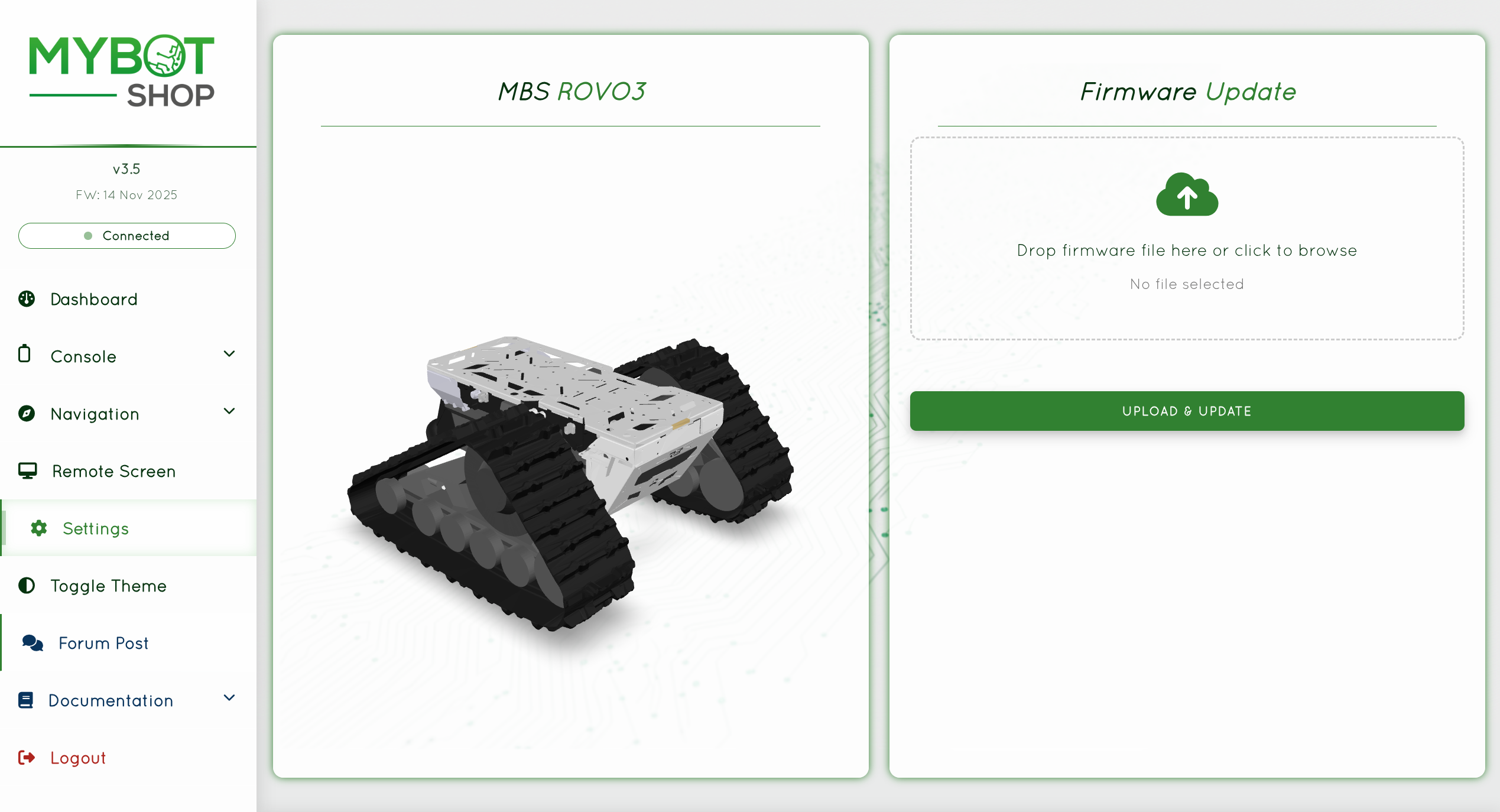
The settings panel allows updates to custom ROS2 modules and configuration components of the robot system.
Documentation
This section links to supplementary documentation, tutorials, and API references for further development and integration guidance.
